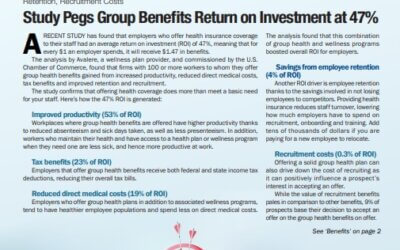While the Affordable Care Act requires employers to offer coverage for employees’ adult children until the age of 26, it does not require them to offer coverage to their workers’ spouses.
As employers try to balance the costs of offering health coverage, spousal coverage is often on the table for cutting when making cost decisions. Many employers view offering spousal coverage as a way to keep up morale and serve as a recruitment and retention tool, but others consider the option a burden.
Cutting it out completely though is often a bitter pill for many employees to swallow, particularly if their spouse’s employer doesn’t offer coverage or if they don’t work. And if they are forced to go to a public insurance exchange, their bitterness could deepen further. What’s required is a diplomatic solution.
Instead of cutting it out completely, employee benefits experts suggest one of two ways to deal with the spousal coverage dilemma and reduce costs at the same time: a spousal carve-out or a spousal surcharge.
1. Spousal carve-out
With this approach, the employer defines plan eligibility so that spouses are ineligible to participate if they are eligible for coverage at their own employer. As an employer, you need to consider the following if this is the way you want to go:
- Will eligibility for any type of employer-sponsored coverage make the spouse ineligible? What if the spouse is only eligible for an employer-sponsored “mini-med” plan or other limited plan coverage?
- Is the cost of the other employer-sponsored coverage a factor in determining eligibility? One common approach is to make the spouse ineligible for the plan only if the spouse’s cost of the other employer-sponsored coverage is less than a certain dollar amount.
Creative approach: Create a spousal carve-out program with an escape hatch that allows the spouse to remain on your plan if the price the spouse would have to pay for coverage under his or her own employer’s plan exceeds a specified threshold.
2. Spousal surcharge
Charging a surcharge for spouses who are eligible for coverage at their own employer provides an incentive for spouses to choose to enroll in the other coverage, while still allowing eligibility in the employer’s plan for those who need it.
That said, this approach is an extra level of complexity in the communication and administration of benefits and payroll.
Creative approach: You can use a carrot instead of a stick. That is, give a monetary award to employees whose spouses switch from your plan to the spouse’s employer’s plan.
Verification
There are three ways to verify if a spouse has coverage through their employer:
- Employee affidavit. Your employee signs a statement certifying that his or her spouse is ineligible for other employer-sponsored coverage.
- Certification from the spouse’s employer. Have the spouse’s employer provide a letter stating that they are ineligible for health coverage. This approach may be difficult if the employer is not cooperative.
- Eligibility audits. You can do spot-checking of employee spouses’ lack of access to coverage by randomly picking staff members and contacting each spouse’s employer, rather than seeking verification in every case.

